News
12/2023 Leibniz-Preis für PriOSS-Chemiker Prof. Dr. Peter R. Schreiner
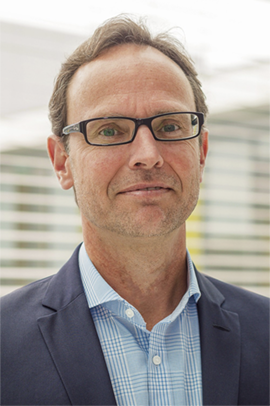
06/2023 Handmade Molecules: P3N3

On-surface synthesis was used to create the structurally elusive P3N3, an inorganic aromatic analogue of benzene. We report the preparation of this fleetingly existing species on Cu(111) and Au(111) surfaces at 5.2 K through molecular manipulation with unprecedented precision.
Original Publication:
Q. Zhong, A. Mardyuvok, E. Solel, D. Ebeling, A. Schirmeisen and P. R. Schreiner. On-Surface Synthesis and Real-Space Visualization of Aromatic P3N3. Angewandte Chemie International Edition e202310121(2023). http://dx.doi.org/10.1002/anie.202310121
05/2023 International Symposium of LOEWE Focus Project "PriOSS"
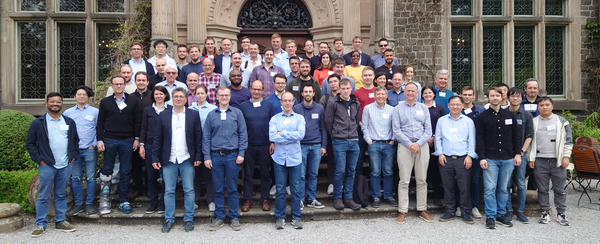
From May 8 to 10, 2023 the first international symposium of the LOEWE focus group PriOSS “Principles of On-Surface Synthesis” took place in Schloss Rauischholzhausen. During the three symposium days over 60 participants discussed their recent research results in the field of on-surface synthesis, which is a multidisciplinary field encompassing physicist, chemists as well as material scientists. New strategies for the design of new organic nanomaterials with unique properties as well as new characterization methods were presented.
10/2022 "ERC Synergy Grant for PriOSS chemist Michael Gottfried"
European Research Council funds search for unusual ring-shaped carbon compounds for applications in organic electronics
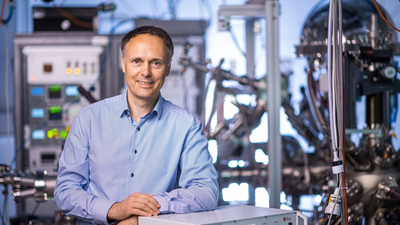
Prof. Dr. Michael Gottfried from the University of Marburg has received an ERC Synergy Grant from the European Research Council (ERC) together with Prof. Dr. Michael Mastalerz from the University of Heidelberg and Prof. Dr. Holger Bettinger from the University of Tübingen. With their project "Tackling the Cyclacene Challenge" (TACY), the three researchers are pursuing the goal of generating a special class of ring-shaped carbon compounds - the cyclacenes - for the first time. The European Research Council is funding the project with around 11 million euros. Of this, around 4.5 million euros is earmarked for the research work at Philipps-Universität Marburg.
04/2022 "A deep look into the molecule"
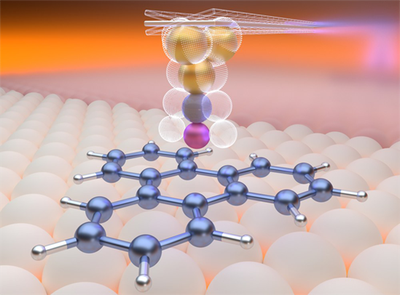
Original Publication
Daniel Martin-Jimenez, Michael G. Ruppert, Alexander Ihle, Sebastian Ahles, Hermann A. Wegner, André Schirmeisen and Daniel Ebeling. "Chemical bond imaging using torsional and flexural higher eigenmodes of qPlus sensors." Nanoscale 14, 5329, 2022 (Cover Article). https://doi.org/10.1039/D2NR01062C
JLU Press release link to article
04/2022 "Organic chemistry under extreme conditions: Prof. Peter R. Schreiner receives ERC Advanced Grant"
Top researcher at the Institute of Organic Chemistry at the University of Giessen awarded the most important European funding prize - 2.5 million euros for the next five years
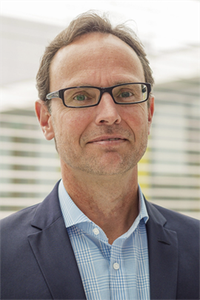
09/2021 "Handmade Nanoarchitectures"
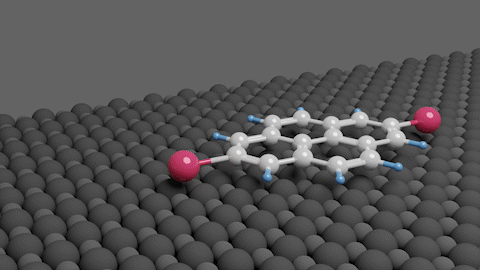 In a recent paper in Nature Chemistry we show how to build nanostructures using individual organic molecules one by one with an atomic force microscope. This opens the path to prototyping of new molecular structures, otherwise impossible to fabricate.
In a recent paper in Nature Chemistry we show how to build nanostructures using individual organic molecules one by one with an atomic force microscope. This opens the path to prototyping of new molecular structures, otherwise impossible to fabricate.
Original Publication
Q. Zhong, A. Ihle, S. Ahlers, H.A. Wegner, A. Schirmeisen, D. Ebeling. "Constructing covalent organic nanoarchitectures molecule by molecule via scanning probe manipulation" Nature Chemistry, 2021
